Product Review: Scangrip Multimatch LED Light
by Ivan RajicGreg recently approached me and asked if I want to “test and review a super secret new product”. Who says no to that! This is what came soon after and we’ve been enjoying it ever since. The Scangrip Multimatch Light..
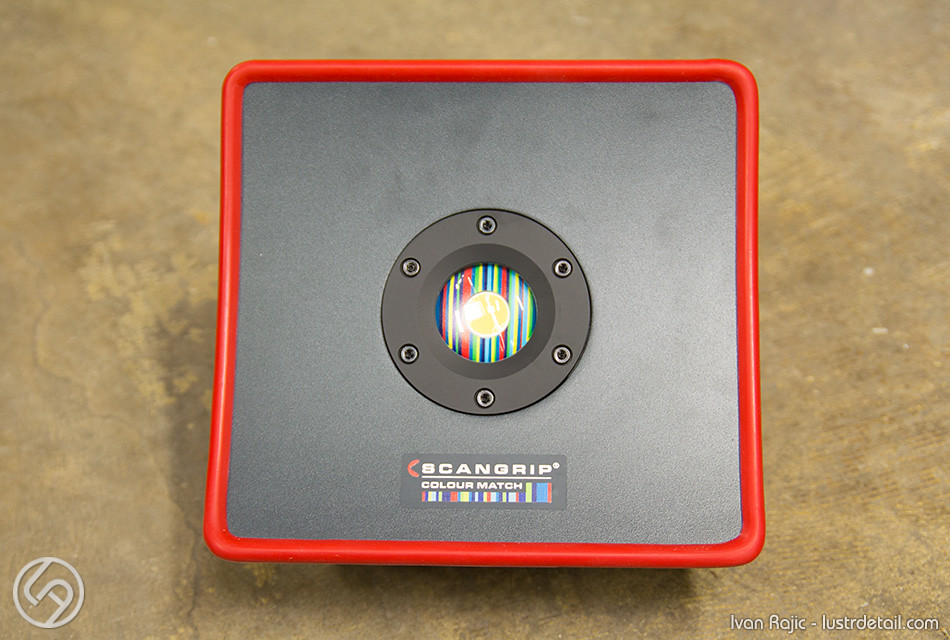
This is one of those products that just “feels” good. Even the look of the box and the charger simply screams quality.
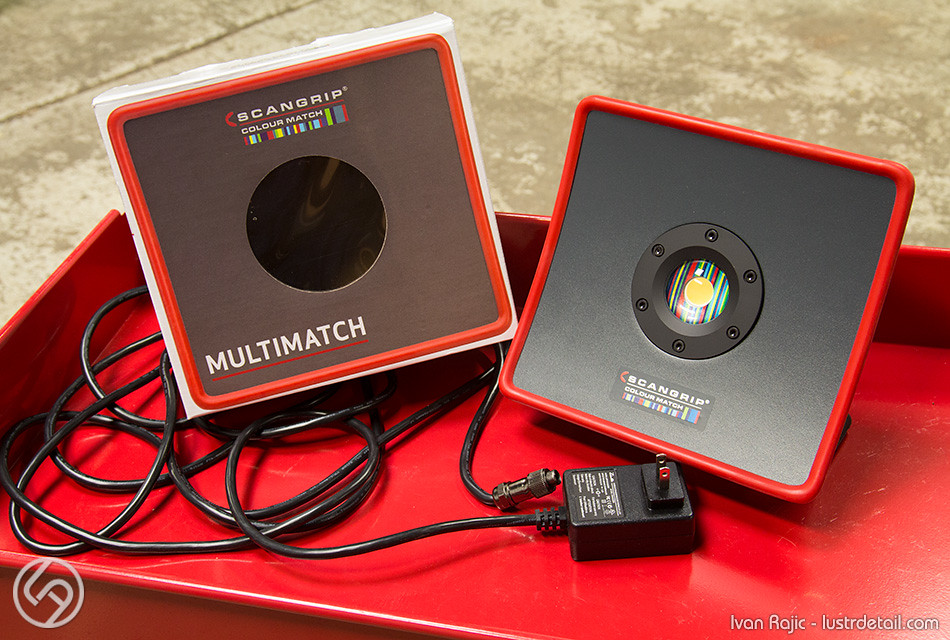
Overall the light just looks very well made and put together, which made it hard to be unbiased when testing it out. The front is a plate that contains the light and a replaceable glass assembly. The curved shape ensures the lens doesn’t get scratched or broken during use or when dropped. The color combo is very nice as well…

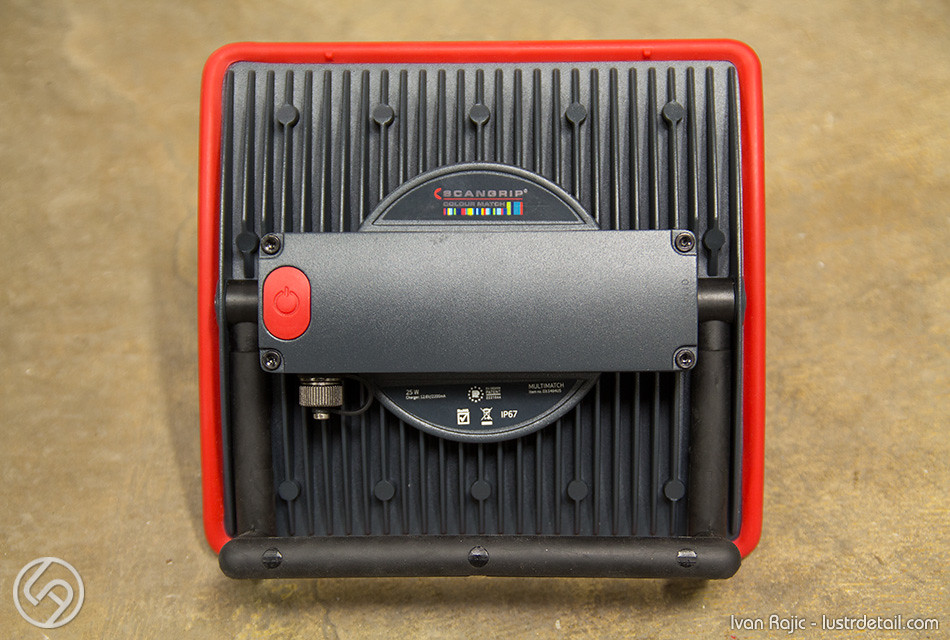
On the rear you see the large, easy to use power button, which has 2 modes. One is 600 lumens and 2nd is 2000. This makes it a great light for both lighting up an area as well as using it as a spotlight, but we’ll get to that later.
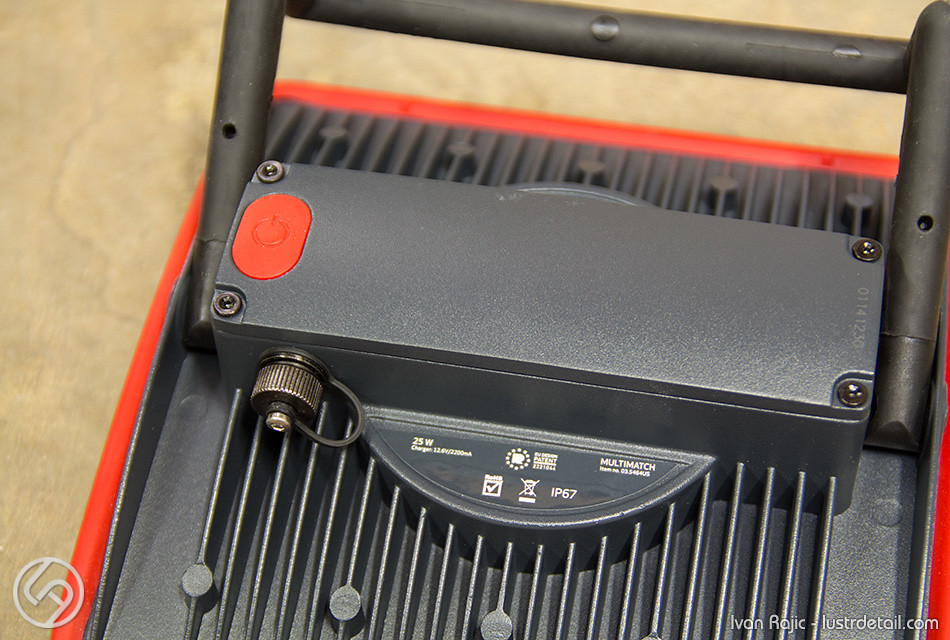
There is a very nice screw cap for the charging port. This goes along with the entire unit being water resistant and dust proof.

The cap unscrews to reveal the charging port, which has 2 small holes and a little notch on top for the cord to fit. The male end on the charger is made with the same material and simply screws on…
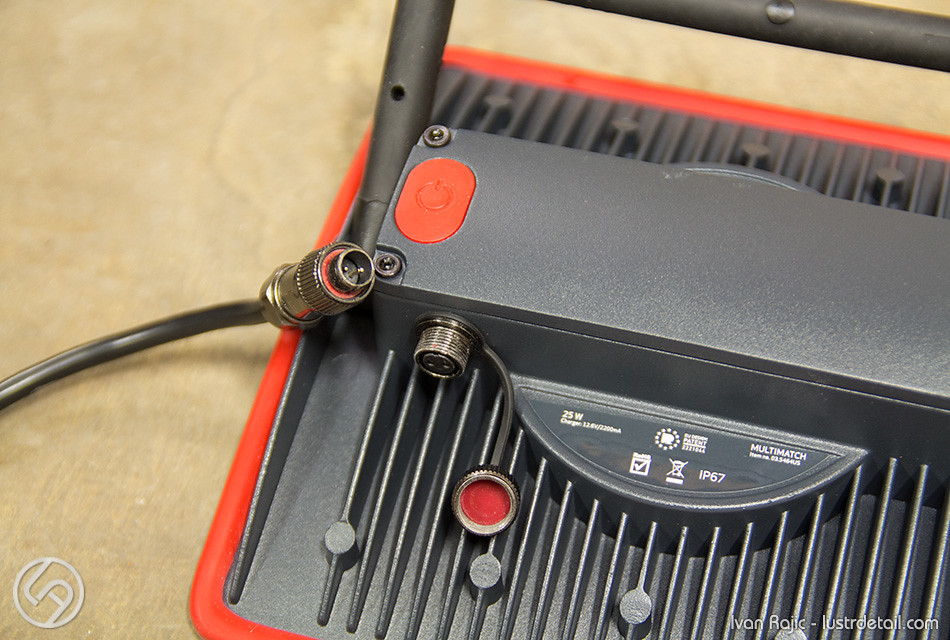
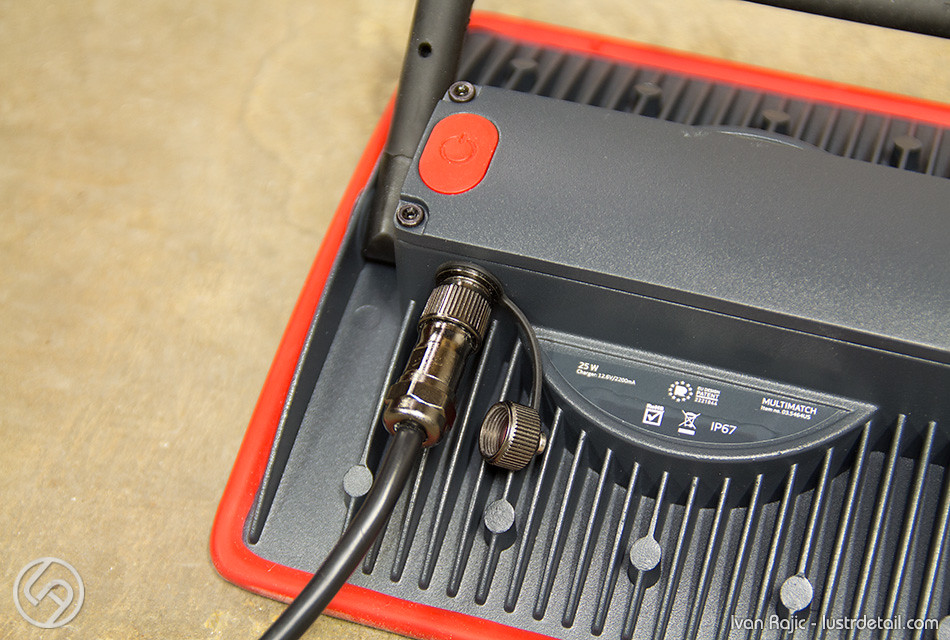
Here I took a couple of photos to show how much the Colour Match actually lights up the area. Kept the camera on the same (somewhat dark) setting and the Corvette was fairly dark…
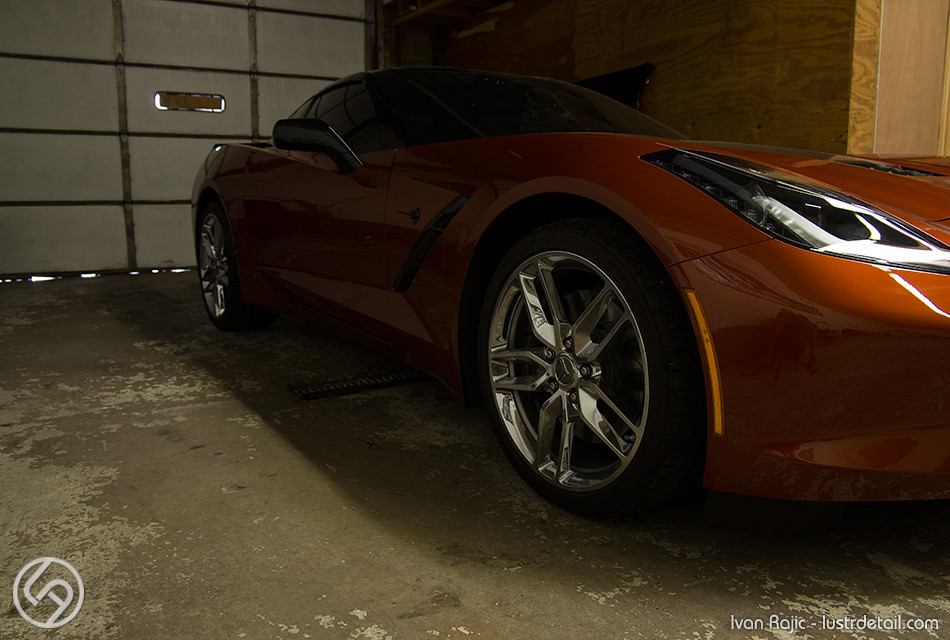
On the first setting at 600 lumens it was already an environment in which you can do some work, but still a bit dark on some places overall…
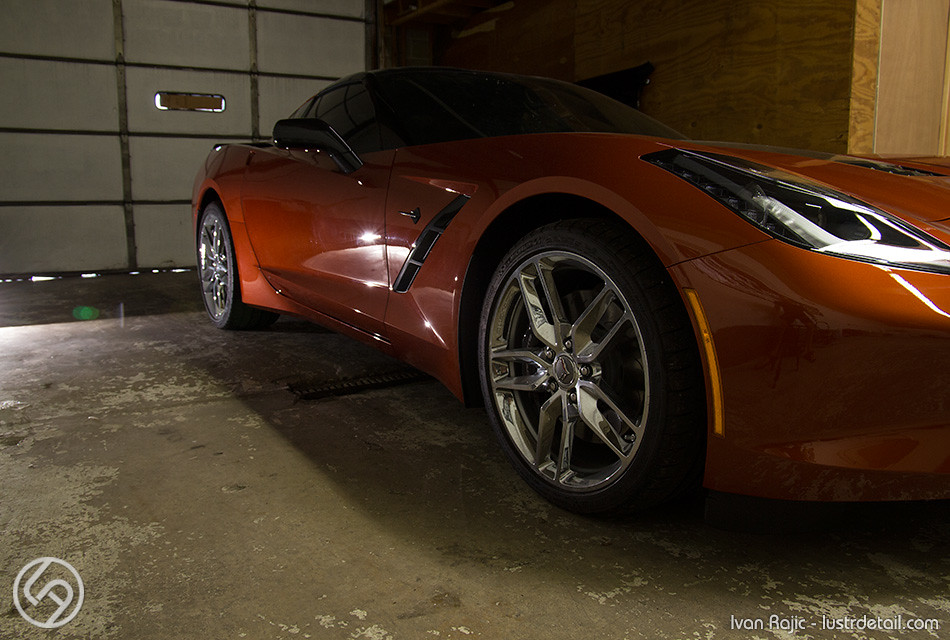
The 2000 lumen setting really made things nice and bright.
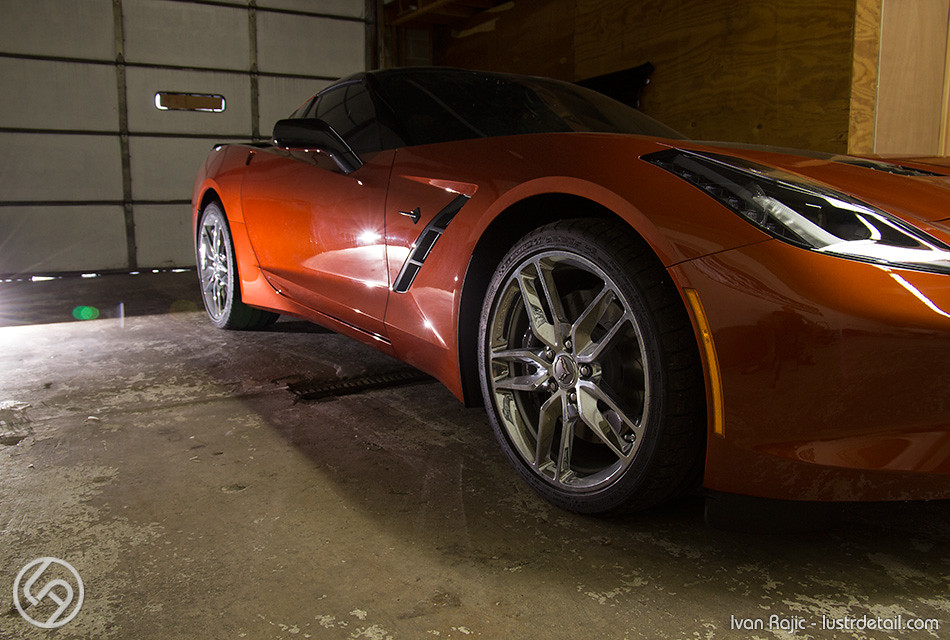
It’s hard to tell in the photo, but you can actually see swirl marks and defects in the paint from quite a distance. This makes it not only easy to work on the side of the car and see stuff like polish residue easily, but at the same time you can check for defects as you’re polishing without moving or being near the light. Simply positioning it the right way will allow for both. In this photo, the light is sitting by the rear wheel, about 4 feet away and slightly angled towards the front. The beam I measured is roughly 9 feet in diameter when it’s placed 4 feet away from the wall. Place it away a bit further and the beam grows.
A few more photos showing the power of the light…
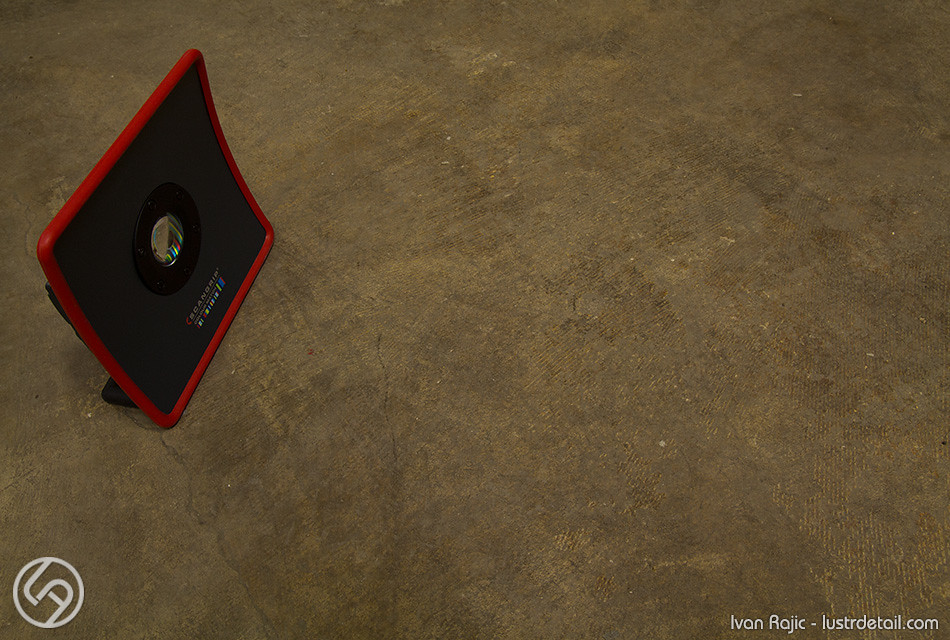
600 lumens…
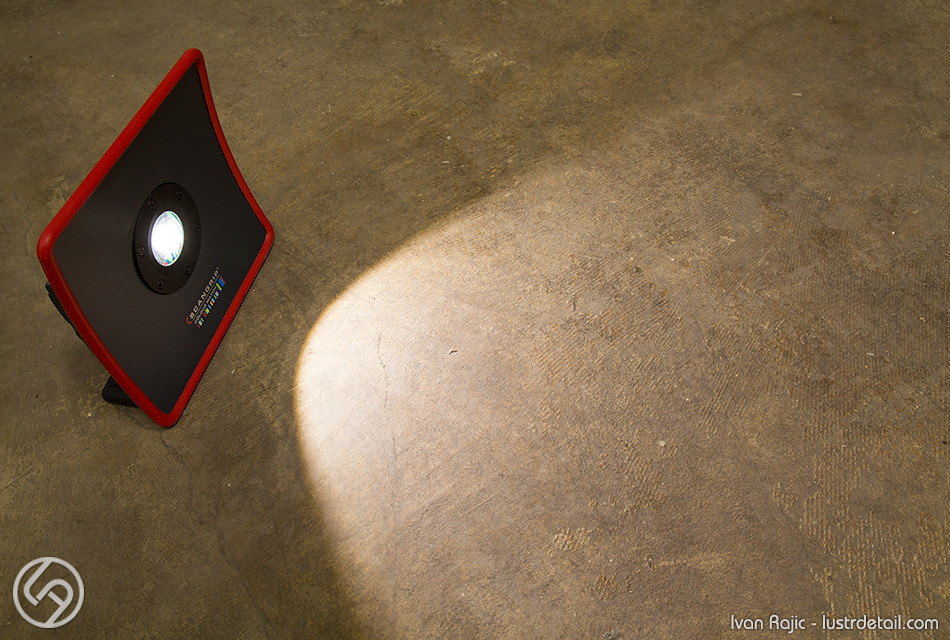
2000 lumens…
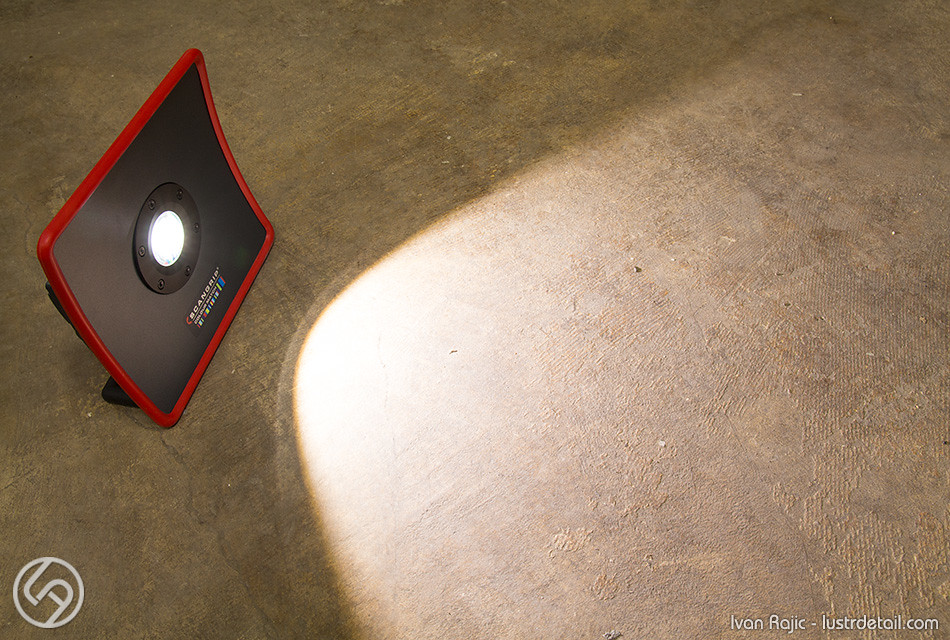
Now a couple random photos because I simply couldn’t stop playing around with it :)…
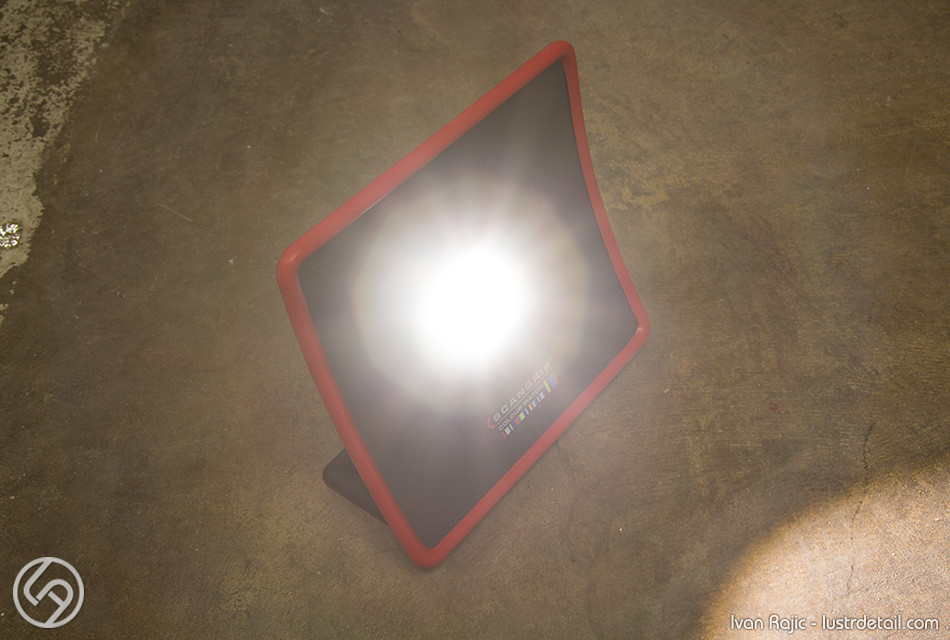
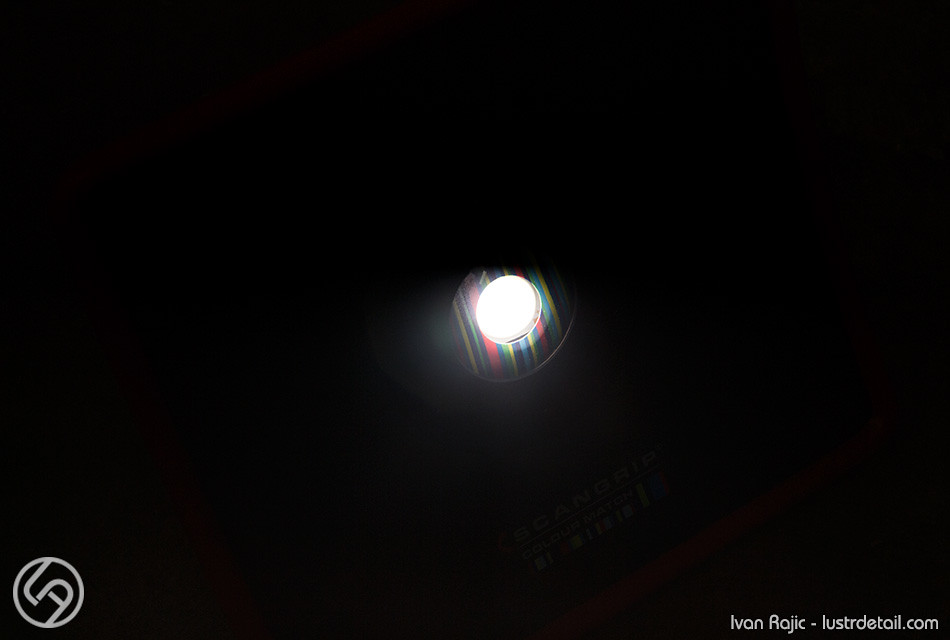
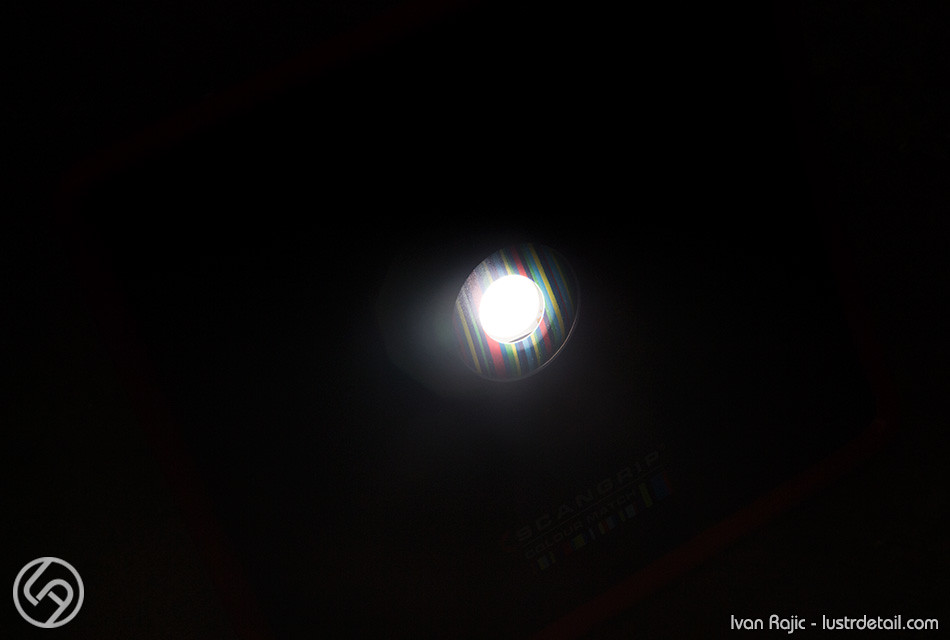
Onto some serious stuff again. The Multimatch is extremely versatile in that it can be run all day plugged in, but also become a portable work light that you can position anywhere. To fully charge it takes around 3 hours and it has a run time of 1.5 hours on the 2000 lumen setting and 6 hours on the 600 lumen setting, which is pretty good on one charge. As shown a bit in the Corvette photos above, this portability and high power allows it too show defects from quite a distance.
Here I wanted to show roughly what kind of defects can be seen when placing the light a certain distance from the car. In this photo, the light is about 15 feet away and on the stronger setting. It clearly shows swirl marks even at that distance, while illuminating the entire side of the car…
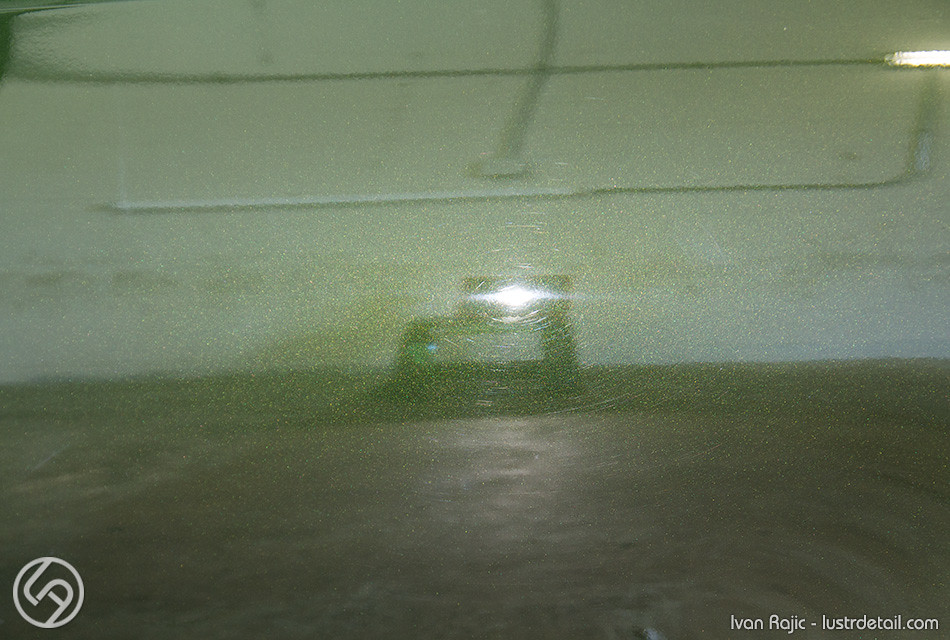
Here it’s roughly 8 feet from the car and already you can see how much stronger it is the closer it gets…

Finally, roughly 2-3 feet from the car the light simply washes out defects in the photo…
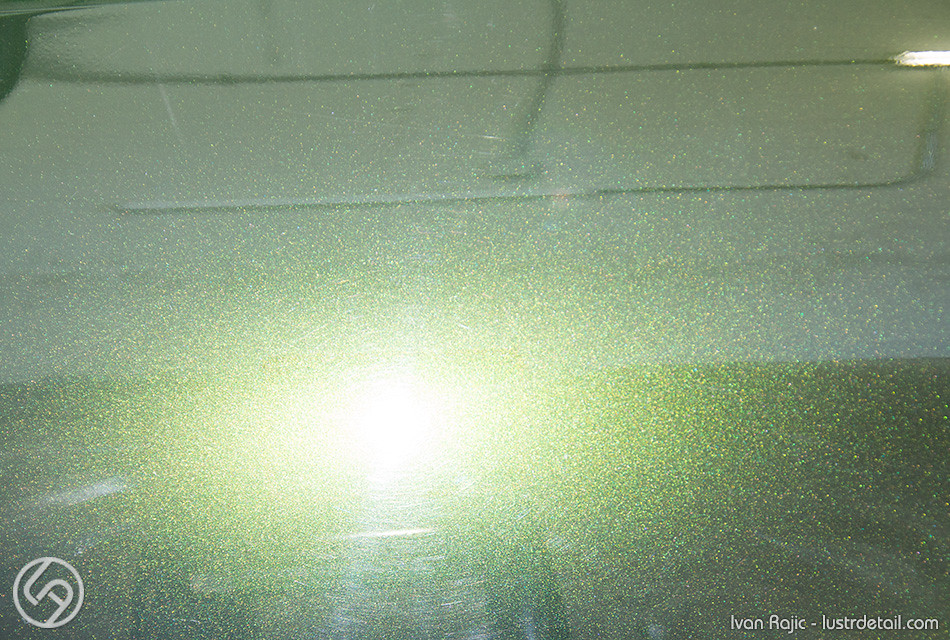
In person our eyes can adjust to the light close up, but it’s really blinding and I wouldn’t be using it any closer than 4-5 feet. On the higher setting that is. Lower setting is fine closer up and works very well. The below photo was adjusted for the brightness and shows things a bit darker than what our eyes would see…
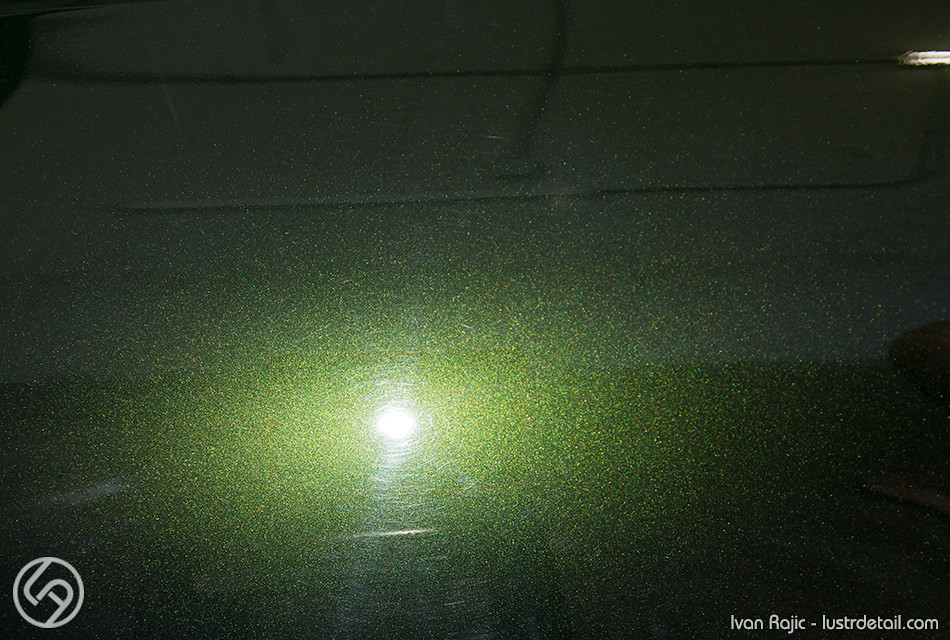
As you can see, one can easily spot any defects in the paint and again, you can do this along the whole side of the car without moving the light. You may have to adjust the angle of it once or twice depending on the size of the car, but it should be fine even in just one position. Here’s just a closeup of some very hard to see defects…

And finally a couple of mandatory half/half photos…
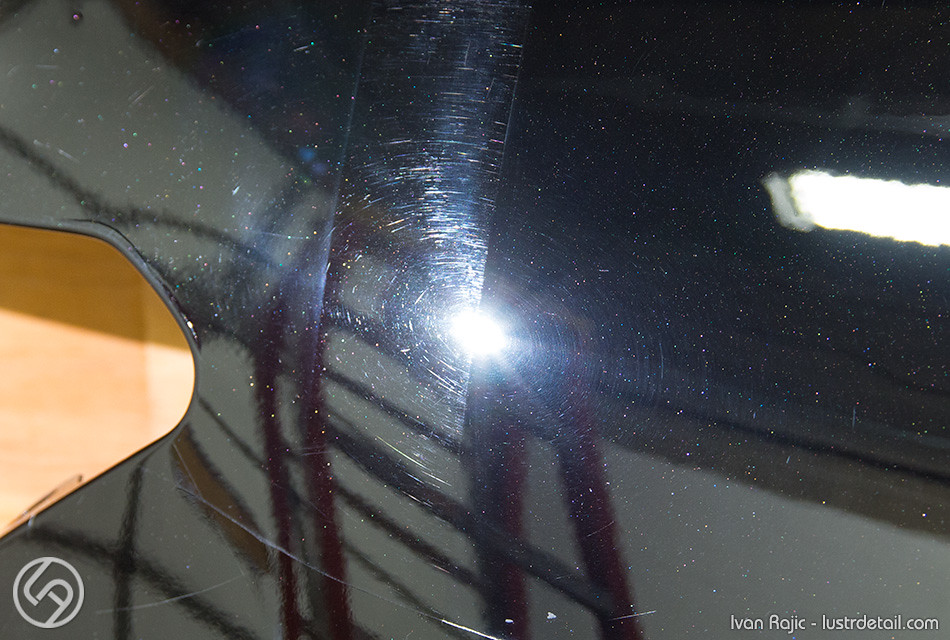

In addition to the great light it provides, the Multimatch has a stand that allows it to almost fully rotate 180 degrees, which means you can use it at multiple angles and place it in many different places in the work area…
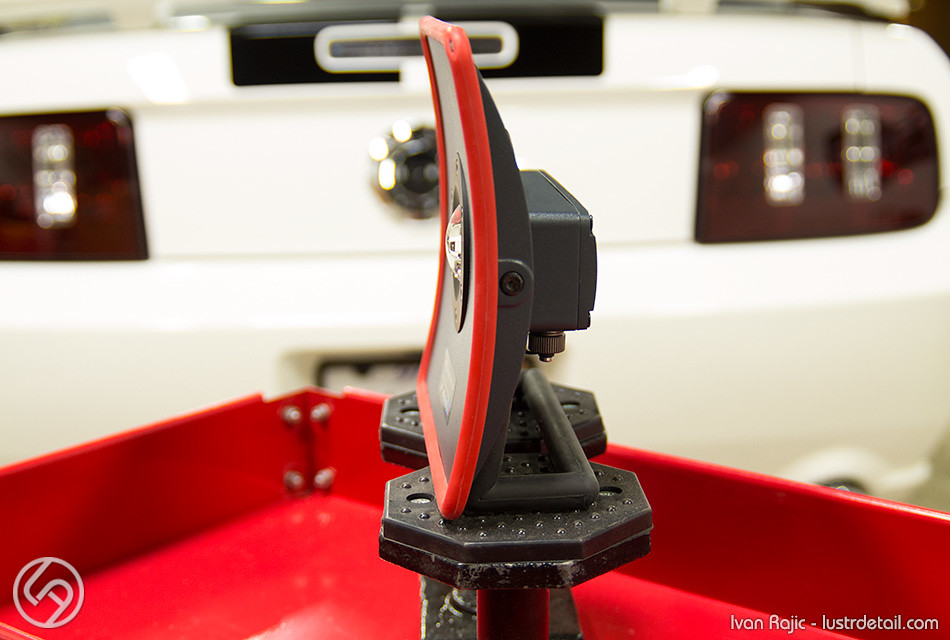
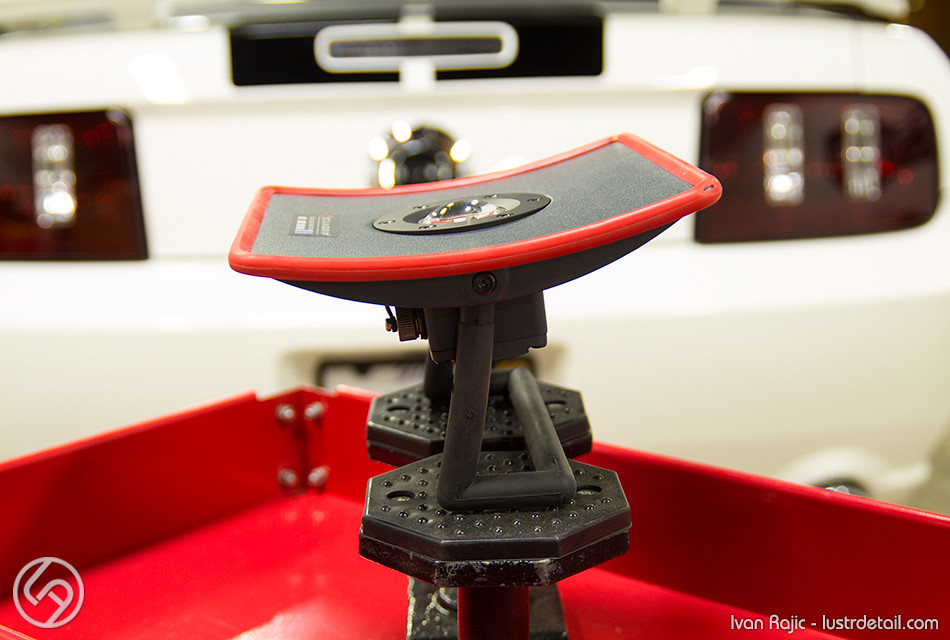
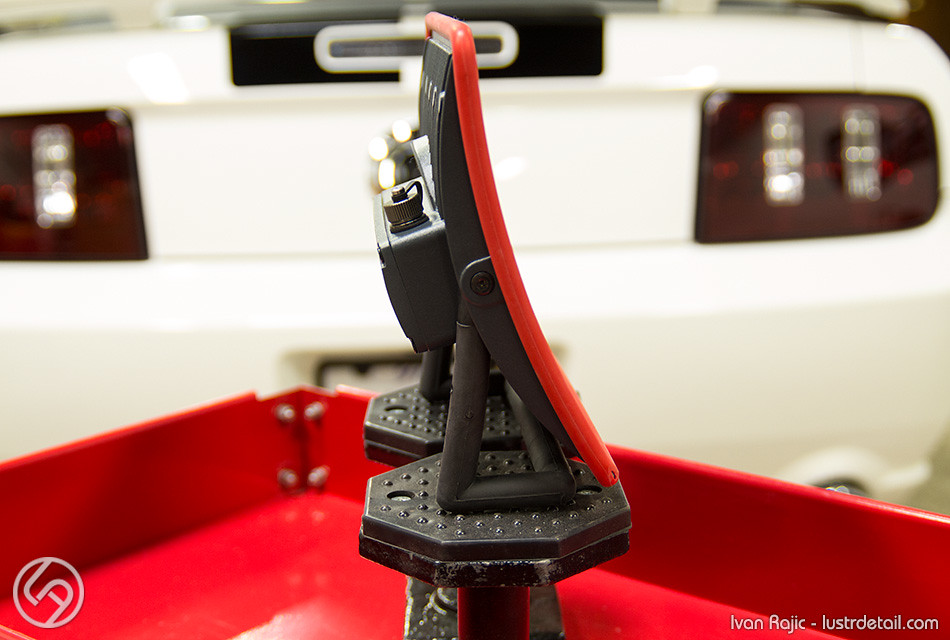
At the end of the day, I believe it’s a great light for the money. I’ve only had it for a few weeks now so can’t speak for it’s durability, but based on the look and feel of it I can see this lasting quite a long time. The price may be on the higher side for enthusiasts, but I believe it’s on par with anything of really great quality and can see it easily being well worth the money over time. You can also save a bit of cash with the Scangrip Colourmatch Kit, which contains the Multimatch, Sunmatch and Matchpen all in a custom made, shock resistant case. The neutral color is another great feature of the light. We’re used to the cooler LEDs in the Brinkmann, which show defects extremely well, but seeing both the defects as well as the actual color of what the paint should look like seems easier on the eyes. We’ll be ordering a few of the smaller Sunmatch lights asap to either replace or be used in tandem with the older Brinkmann LED lights we have. Here’s my review of the Sunmatch light which we also recently had a chance to put to good use. I can keep going with examples of how the light can be used and how well it works with each of those uses, but I really don’t think I can say enough about it. It’s just one of those tools that comes by every now and then and blows everything else away. We’ll be investing in 2-3 of these lights to use both on the job and around the shop. As always, thanks for reading!
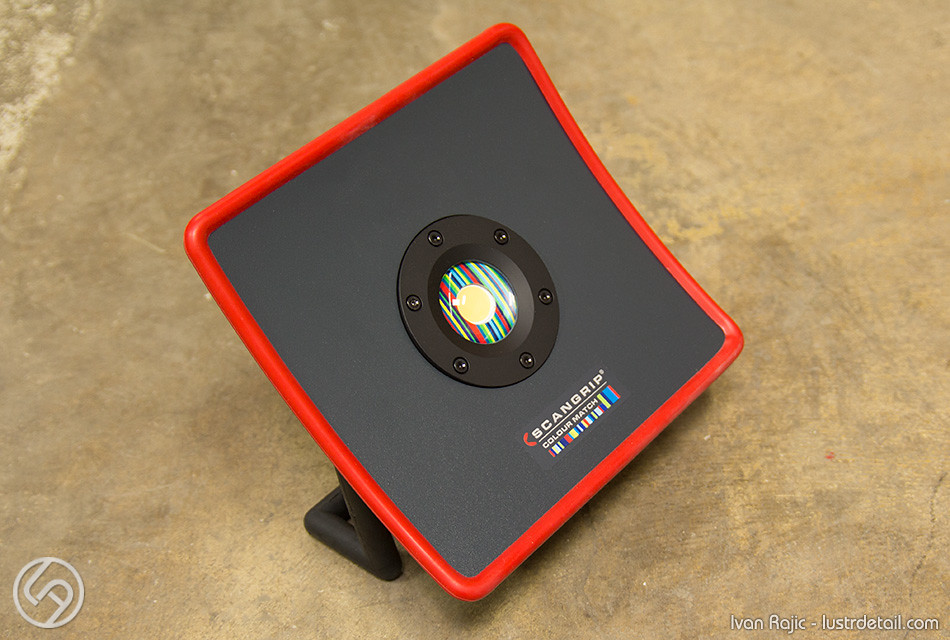










Good stuff, Ivan. Nice review on an awesome product!
So, other than the two position light, how is this different than the SNAP-ON LED Work light? It is also 2000 Lumens (25 Watts), cool to the touch and has a standard work light “set up”. Stand, handle, etc.? And it is only $30 at Costco.
It can’t be dimmed but other lights are used for “close-up” work.
Danny unfortunately I can’t compare the two as I’ve never tried the Snap-On light. Maybe someone with experience with both will chime in eventually with a good comparison.
Very good question. I don’t have direct experience with the Snap On but I have some insight on what I would expect. The build quality would probably be the first thing you notice. I’m not a Mac guy but when I held an iPad for the first time you could feel it was just built better than many competitors and this light is similar in my opinion. I believe it’s durability should be superior, they dropped it 11 times from roughly 6ft up on a concrete floor before the corner pulled apart a bit at a show. Previously they got 16 drops before it stopped working. If you ever used a Brinkmann Light you know it was 50/50 it would work after one drop at this height. This Scangrip light also produces a warmer glow that more closely resembles sunlight. I believe it had a CRI of 96 out of 100 but they labeled it 95 to be conservative, so it does a great job of representing colors for what they truly are. We’ll hopefully have more info as we do more testing.
I’d like to expand on Greg’s & Ivan’s answers to Danny Comsa’s question about how the Scangrip Multimatch differs from the Snap-on Tools brand sold at Costco. I do not hold a PhD in Color Science and I tried to provide answers without getting too technical.
If you look closely, the Snap-on light is only licensed by Snap-on to sell under their brand. Anything not made directly by Snap-on is sold through their Blue-Point catalog and must meet certain quality standards. This light is not in the Snap-on or Blue-Point catalogs if that says anything about it meeting certain quality standards. I’ve seen the light at Costco and it looks like a good, general work light and I’m sure it would be great for the homeowner. The Multimatch make a great work light as well because it can be used with its 15 foot power cord or unplug the cord and have up to 6 hours of lithium-ion battery time. The Ingress Protection or IP rating is 67 which means it is completely dust tight and can be immersed in up to 1 meter of water. If it’s being used as a detail light, chances are that it’s going to get wet at some point in its lifetime. Greg mentioned the Multimatch’s CRI or Color Rendering Index and I’d like to give a brief explanation about CRI. A CRI is a quantitative measure of the ability of a light source to reveal the colors of various objects faithfully in comparison with an ideal or natural light source. Typical LEDs have a CRI around 80 which I would compare to the color of the moon on a clear night. 80 CRI has a very sterile white appearance to the human eye and although 80 will help pick out the most obvious paint imperfections indoors; however once you pull the vehicle out into sunlight, you’ll notice just how much paint imperfections that were missed. If your goal is to be very accurate about paint defects such as swirl marks, burn through, sand scratches and dirt-nibs, the CRI needs to be over 90. As Ivan mentioned, Scangrip Color Match lights were measured 96 CRI. These measurements given to me by a friend who just happens to be a Color Scientist who works for the largest OEM & aftermarket automotive paint company in the world. The closer to 100 the better and I am not aware of any other LED on the market higher than 96. The last technical difference between the two lights is the Kelvin Color Temperature. Scangrip looked for the best Kelvin temperature for color matching and identifying paint defects. Daylight ranges from 2000K-3000K at sunrise through to 6500K-7000K for an overcast day. Depending what marked-up Kelvin chart that you’re looking at on-line, an overwhelming majority say that noon daylight, without a cloud in the sky is somewhere between 4300K to 5200K. The TV & Film Industry would say noon is 5500K -5500K and the ideal temperature because they must consider motion so the ideal Kelvin temperature depends on what you are doing. Kelvin is inversely related to Fahrenheit. The lower the Kelvin, the warmer a color looks and the higher the Kelvin number, the cooler a color looks. The Snap-on light is 5000K and the Multimatch 4500K. Being higher on Kelvin is not always better like the CRI when it comes to identifying paint imperfections. Remember that it depends on what task you’re doing with the light. I’ve been told by experts in the field that 5000K is too cold of a temperature and it’s too blue to identify paint imperfections and to color match paint. Scangrip’s research showed 4500K is the best overall temperature even though they make LED’s all the way up to 6500 on the Kelvin scale. Hope this information helps.
I would like to see what this light can do to help identify imperfections on light cars.
Dark cars are easy(er).
How much will this help me with my silver Tacoma and silver Impreza?
Jeff, from my short experience with it on 3 light color cars (2 white, 1 silver), this light doesn’t wash out the defects as much as some other LED lights we’ve used. Due to the wide beam it seems to just perfectly illuminate the defects. You will have to adjust the distance from the car and/or the light setting (high/low) of course, but it works great on light color cars from my experience.